Australia So Much to See
Wheat, Wildflowers and Weird Art in Western Australia
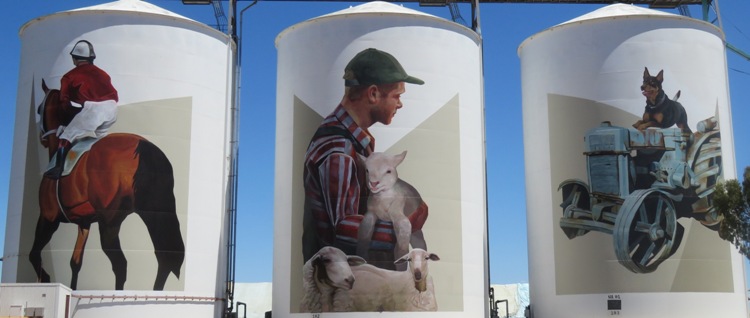
Katanning is a rural centre for the wider region with a broad range of shops, plus many rural industries and services. A number of murals were painted last year on transformer boxes and walls around the town. The town was gazetted in 1896, when there was already a population of over 200 residing there.
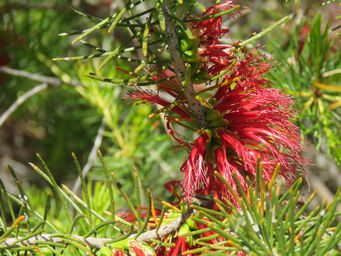
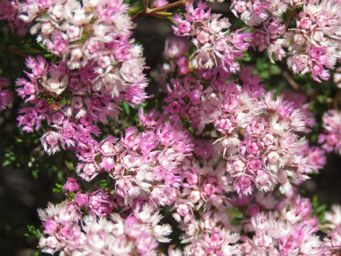
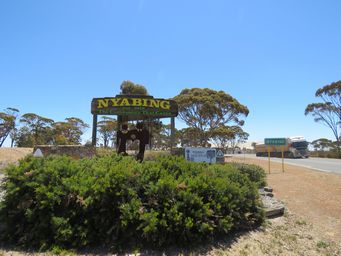
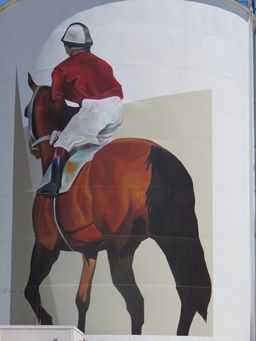
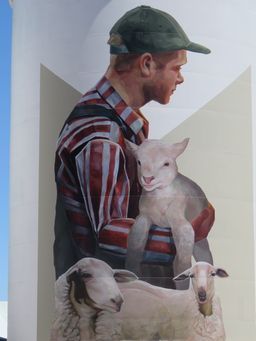
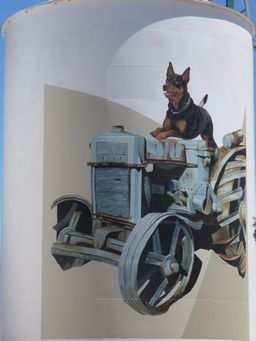
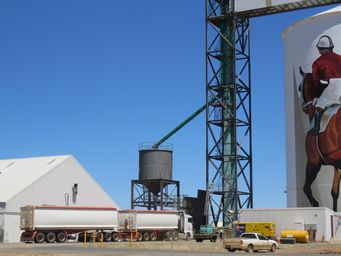
Expecting most wildflowers to be finished, I was delighted to find Verticordias (feather flowers) flowering on the road verge, the first of many different and lovely Verticordias I was able to see on this tour. The variety of other wildflowers in flower was a lovely surprise too.
Nyabing and Pingrup are small towns where the wheat bins were receiving grain for the continuing harvest.
Here a road train carting grain is one of many on the roads during harvest time.
At Pingrup, painting on the three tall silos were completed in August 2018, see Painted Silos Western Australia .
These paintings represent the activities and industries of the district. Picnic race days are a still a big part of social life in some small rural towns. Sheep, which are farmed in conjunction with wheat cropping, are displayed on the second silo. An old tractor with the farmer’s ‘best friend’, his dog, appears on the third. A grain road train can be seen on the weighbridge entering the complex to offload, photo below.
Australia So Much to See
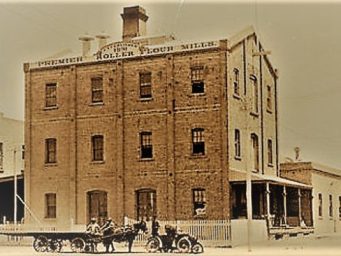
Heading east from Katanning towards Nyabing, I passed the turnoff to Lake Ewlyamartup, a lake which has water most of the year, a
picnic area, and overnight camping permitted. When full, the lake covers approximately 110 hectares.
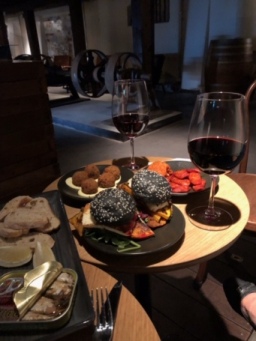
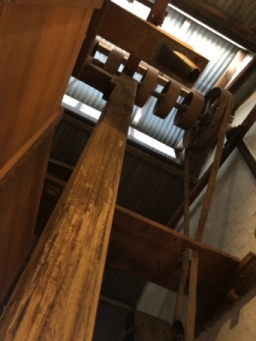
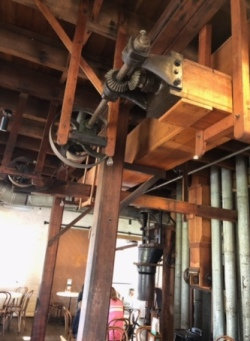
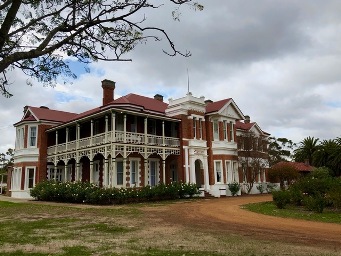
In 1840, Elijah Quartermaine began shepherding sheep from Beverley to what is now Katanning. Local aboriginal folk showed him
where there were springs of fresh water and he would continue to visit for the next 20 years. In 1860 he settled permanently
creating the first farm in the district at “Yowangup”.
Summer was showing its presence fast, with hot late November days. Harvesting in the wheatbelt was still under way. Even
though the spring flush of wildflowers was past, the bush and scrublands were still vibrant with many wonderful wildflowers.
This short tour takes us through farming areas where principally wheat is grown, and towns including Katanning, Nyabing, Pingrup,
Newdegate, Kulin, Harrismith and Wagin. What did I see? Read on.
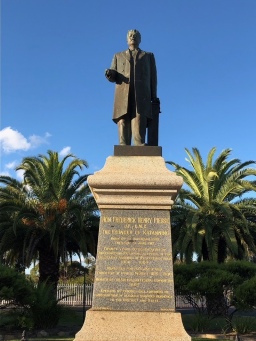
Frederick Piesse is considered the founding father of the
town of Katanning.
The majestic mansion known as Kobeelya (above right) was built as the home of Frederick Piesse MLA CMG and his family in 1902. Kobeelya was named by Sir John Forrest, Western Australia’s first Premier.
This outstanding heritage listed two storey home
overlooks the historic town of Katanning. When constructed it contained seventeen rooms; bathrooms with hot and cold running water,
indoor toilets (septic), seven bedrooms and billiard and ball rooms. In fact, it was the first home in Western Australia to be connected
to electric power and the first in country Western Australia to have hot and cold running water.
From 1922 to 1975 it was a
Church of England boarding school for girls, accommodating almost 100 students, and was unique as students could bring their horses. Then until 1986 the school was run by Penrhos college and the Uniting Church.
Today, it has been fully restored by the
local Baptist community and is used for accommodation, retreats, conferences, weddings, and the like. The Kobeelya Old Scholars
Association have a museum in the coach house which has limited opening times.
Within easy walking distance to the
town’s centre, and occupying six hectares of parkland, Kobeelya provides comfortable and inexpensive accommodation for over 90 guests,
with a range of room styles and options. There are several common rooms, lounge areas and verandas.
The majority of the rooms
are shared, with new and very comfy king single beds and shared bathrooms. There are also double rooms with en-suite options available
in buildings adjacent to the main residence.
The upper storey is now a private residence while shops remain on the street front.
The King George Hostel, once called St George's Hostel, opened in 1913 and was built by Alexander Thomson for Melville Piesse, a son of F H Piesse. Katanning was at this time experiencing a boom in farming and so worker accommodation became necessary. Members of the Piesse Family managed the hostel.
The hostel is largely in original condition: brick walls and tiled roof, wooden floors and verandah posts. There are six separate shops on the ground level, including an accountant's business, which has been located in the hostel since 1913. The shops and stairwell have pressed metal ceilings and the wooden staircase is in original condition. In the hall is an ornate wooden hallstand with the Piesse crest carved into it. The public dining room, original large stove and bakers oven have all remained part of the hostel. Ref: Inherit
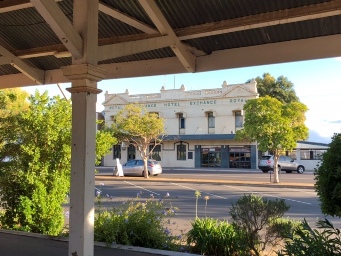
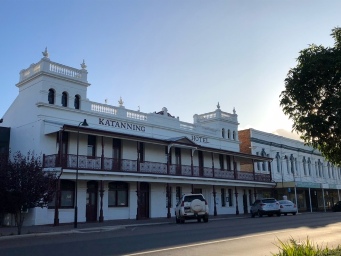
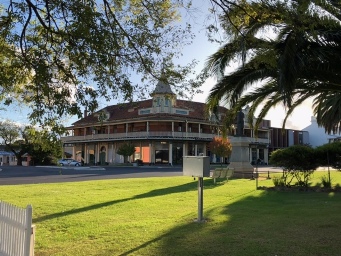
The first hotel erected in 1889 by the Piesse Bros. burnt to the ground in a fire in 1893. The hotel was rebuilt on its present site
in 1898. After the Second World War the Swan Brewery bought the hotel and completely modernised it. In 1965 the hotel again
underwent extensive renovations. Ref: Inherit
Adjacent shops, originally Piesse Stores, were built around 1901.